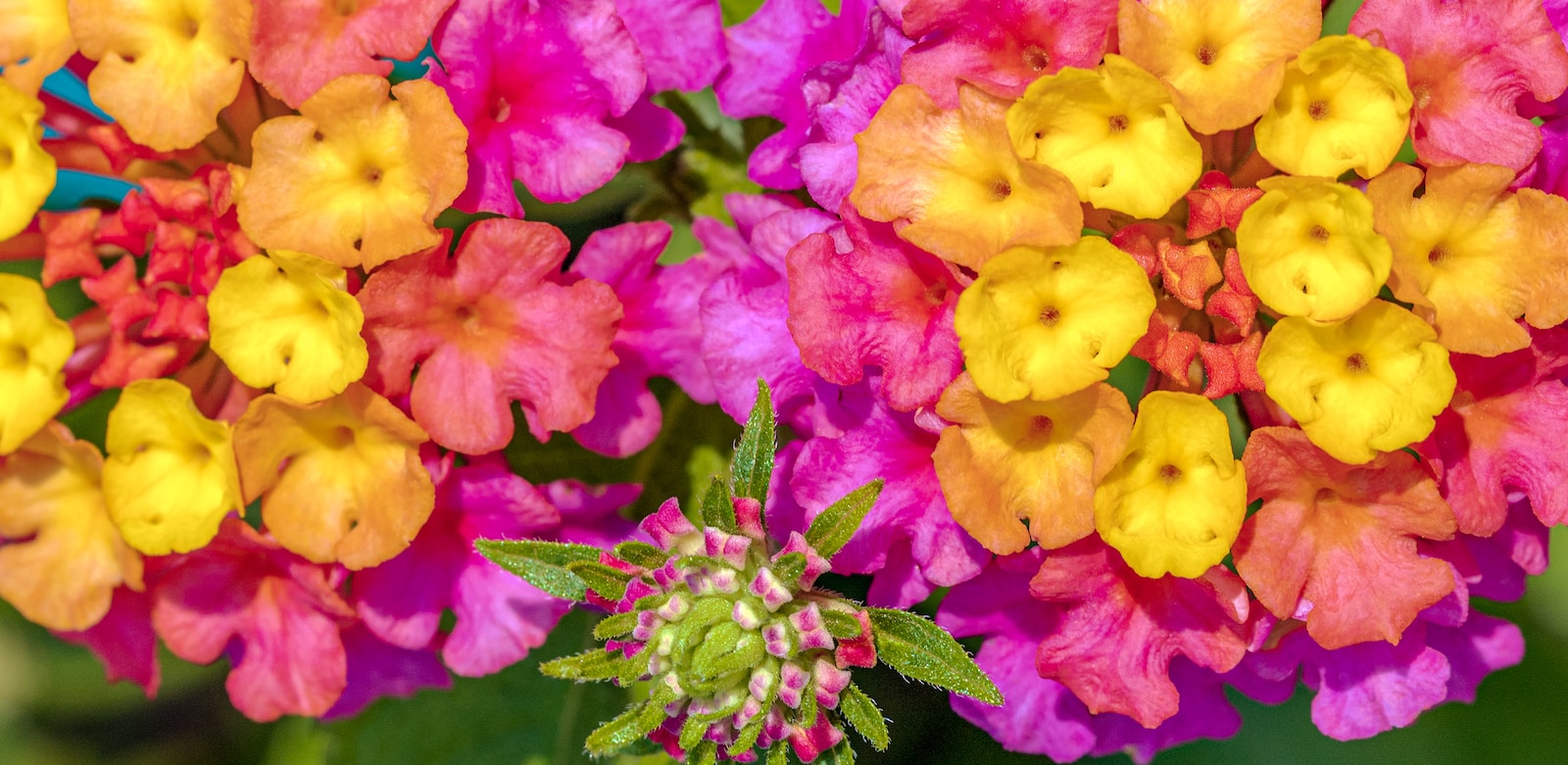Lantanas are well-known for their vibrant, colorful flowers that bloom profusely throughout the warm months. These perennials, hailing from tropical regions, are loved by gardeners for their heat tolerance and easy maintenance. With flowers ranging from red and orange to purple and yellow, they create a striking visual appeal in gardens, borders, and containers.
Not only are Lantanas delightful to look at, but they also have a strong, pleasant aroma that attracts butterflies, bees, and hummingbirds. Many varieties offer unique patterns and color combinations, ensuring that every gardener can find a type of Lantana to suit their aesthetic.
But Lantanas are not just ornamental; some cultures use them for medicinal purposes, and the aromatic leaves are utilized in certain culinary applications. However, it’s essential to note that Lantana plants contain substances that can be toxic to pets and children if ingested, so careful handling and placement are necessary.
| Attribute | Details |
|---|---|
| Common Names | Lantana, Wild Sage, Shrub Verbena |
| Botanical Name | Lantana camara |
| Family | Verbenaceae |
| Plant Type | Perennial, Shrub |
| Mature Size | 1-6 feet tall, depending on variety |
| Sun Exposure | Full Sun |
| Soil Type | Well-draining soil |
| Hardiness Zones | 8-11 |
| Native Area | Central and South America |
Lantana Care
Lantanas are relatively low-maintenance plants, thriving in conditions that might be challenging for more delicate species. They do well in hot, dry climates and are drought-tolerant once established.
The main aspects of Lantana care include providing ample sunlight, maintaining well-draining soil, and occasional pruning. Regular deadheading (removing spent flowers) will promote continuous blooming throughout the season.
Light Requirement for Lantanas
Lantanas thrive in full sun, meaning they require at least 6-8 hours of direct sunlight each day. The bright light helps them produce their vibrant, colorful blooms. Planting them in a shaded area may result in fewer flowers and leggy growth.
Soil Requirements for Lantanas
Well-draining soil is vital for Lantanas to prevent root rot. They aren’t too particular about soil pH or fertility but prefer a sandy or gravelly soil structure. Overly rich soil may lead to lush foliage at the expense of blooms.
Water Requirements for Lantanas
While young Lantanas need consistent moisture, established plants are quite drought-tolerant. Watering once a week should be sufficient in most climates, but the soil should be allowed to dry slightly between waterings.
Temperature and Humidity
Lantanas are tropical plants and thrive in warm temperatures. They can tolerate heat and humidity but may struggle in cold temperatures below 50°F (10°C). In cooler regions, they are often grown as annuals or brought indoors during winter.
Fertilizer
Lantanas generally don’t require much fertilizer. A light application of a balanced, slow-release fertilizer at planting time is usually sufficient. Over-fertilizing may lead to fewer flowers.
Pruning Lantanas
Pruning Lantanas helps maintain their shape and encourages more blooms. Regular deadheading and cutting back leggy stems will keep the plant looking its best.
Propagating Lantanas
Propagation of Lantanas can be done through cuttings or division. Cuttings should be taken in the spring or early summer and rooted in a well-draining medium.
How To Grow Lantanas From Seed
Growing Lantanas from seed is possible but can be slow and challenging. Seeds should be stratified and sown in well-draining soil. Germination can take several weeks.
Common Pests & Plant Diseases
Whiteflies
Treat with insecticidal soap or neem oil.
Powdery Mildew
Ensure proper spacing and airflow to prevent this fungal disease.
Common Problems With Lantanas
Lack of Blooms
This problem can occur due to insufficient light or over-fertilizing.
Pro Tips
- Plant Lantanas in a sunny spot to ensure vibrant blooms.
- Avoid over-watering and over-fertilizing to prevent leggy growth and




